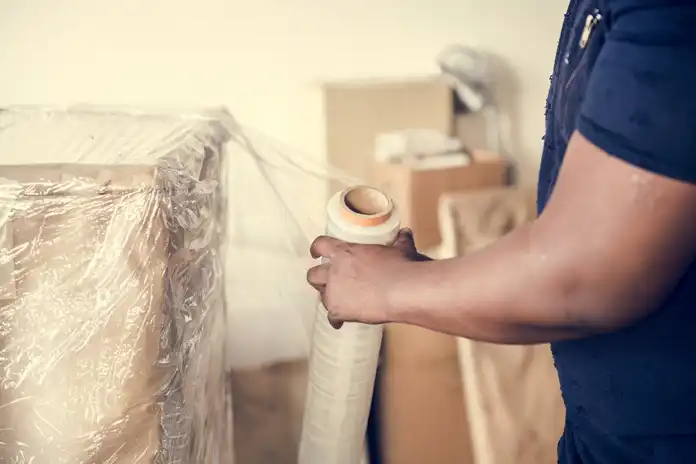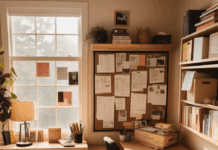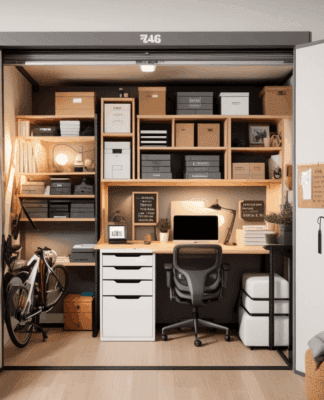Storing furniture in a storage unit helps keep it safe and organized. Whether you are moving, downsizing, or clearing space, proper storage prevents damage and extends the life of your furniture. Climate-controlled storage protects against temperature changes and humidity, but other steps can also help. Using the right packing methods, choosing the best placement, and covering items correctly can prevent scratches, warping, and other damage. This guide explains how to store different types of furniture to keep them in good condition.
The Importance of Proper Furniture Storage
Furniture doesn’t come cheap. It can be quite an investment, so you want to do everything you can to keep it safe. In doing so, you can ensure that your valuable furniture remains in good condition and preserve its aesthetic appeal for years. Following storage guidelines based on the material of your furniture can also extend the lifespan of each piece, as well cared for, high-quality materials can last for generations. This is especially important for antiques and furniture susceptible to damage. Finally, proper long-term storage for furniture pieces can help reduce the risk of damage such as scratches, dents, warping, and mold growth.
What to Know About Storing Different Types of Furniture
Different types of furniture require different storage preparations and conditions, so it’s important to take an inventory of what you’re going to put in your unit. Upholstered, wood, and fabric furniture, as well as antiques, all require a unique approach.
If not properly cleaned before storage, upholstered furniture collects dust, dirt, and allergens more readily. Moreover, moisture can lead to mold and mildew growth in fabrics, leading to irreversible damage and harm to your health. Wooden furniture, including items such as tables, chairs, cabinets, and dressers, requires specific care during storage due to its unique characteristics. Otherwise, delicate wood furniture can become easily damaged. Since wood is highly porous, any excess humidity levels or exposure to water can cause it to warp, swell, or grow mold and mildew. Antique furniture, which often has historical, cultural, and monetary value, requires special care during storage due to its unique characteristics. Preparing antiques can help ensure that you preserve their value and authenticity for future generations. Just make sure you keep a record of your stored furniture, especially if it’s an antique, to reduce the risk of any issues. You may also want to take out an additional insurance policy on any pieces that have a high monetary value, especially if you’re planning to store them for longer periods of time.
10 Tips for Storing Different Types of Furniture
Whether you need self-storage for a week, or you need to store your furniture for an extended period of time, it’s good to have some storage tips in hand. Some of the best tips to keep furniture in good condition during storage include the following.
1. Consider All of Your Storage Options
Some people may want to store furniture in a garage, but that’s usually not the best option. Due to the vulnerabilities of certain materials, it’s better to consider renting a climate-controlled unit near you. While there are options for less controlled environments, anyone who lives in an area with fluctuating temperatures should consider climate control for long-term furniture storage. Additionally, you’ll want to research nearby storage facilities, inquire about their services, and assess whether they offer the right size units for your furniture. Finally, look at factors like location, security measures, and accessibility before you choose a storage unit.
2. Thoroughly Clean and Disinfect Each Item
Next, before putting furniture in storage, take the time to thoroughly clean and disinfect each item. This will help protect furniture and prevent the buildup of dirt, dust, and potential pests. However, the cleaning process varies depending on the type of furniture:
Wooden Furniture: Use a wood-appropriate cleaner to remove any dirt or stains. Polish wooden surfaces to maintain their luster.
Upholstered Furniture: Vacuum fabric thoroughly to remove dust and debris. Treat any stains or spots according to the manufacturer’s instructions.
Metal Furniture: Wipe down metal surfaces with a damp cloth to remove any grime or smudges. Consider applying a rust inhibitor to prevent corrosion.
Leather Furniture: Clean leather furniture with a suitable leather cleaner to preserve its texture and appearance.
Antique Furniture: Clean and protect the furniture using material-specific techniques. Consider asking a professional for storage tips to reduce the risk of damage.
Outdoor Furniture: Wash outdoor furniture with mild soap and water to remove dirt, pollen, and prevent mold buildup. Make sure all pieces are completely dry before storage to prevent mildew and rust.
3. Ensure the Furniture Has Dried Completely
After cleaning and disinfecting, you’ll want to inspect each piece of furniture to ensure it’s completely dried. This will help protect furniture in storage from mold or mildew growth. To facilitate drying, place furniture in a dry and well-ventilated area. Consider using fans or dehumidifiers to expedite the drying process, especially for upholstery or porous materials. You can also open windows or doors to encourage air circulation.
4. Take Everything Apart Carefully
For furniture that can be disassembled, such as tables, bed frames, bookshelves, or shelving units, consider taking things apart before finding space in your storage unit. Disassembling furniture not only saves space but also reduces the risk of damage during transportation and storage. Just make sure that you keep all hardware, screws, nuts, and bolts in a labeled bag or container with the corresponding furniture item to ensure you can reassemble them correctly later.
5. Wrap Furniture for Storage
Wrap your furniture to protect it from potential scratches, dents, or damage during storage. When doing so, pay special attention to corners and edges, as they’re vulnerable areas. Secure the materials snugly, but not too tight, to avoid unnecessary pressure on the furniture’s surfaces. Some wrap options include blankets, bubble wrap, and plastic covers.
Furniture blankets are thick and padded, providing excellent protection for wood furniture, sofas, and other large items. Ensure the blankets cover the entire surface (or at least the most vulnerable areas) and secure them with tape or straps. Bubble wrap can be used for delicate or fragile items, such as glass tabletops, mirrors, or decorative pieces. Plastic covers or shrink wraps protect upholstered furniture from dust and moisture. Just make sure you leave a small opening or vent to prevent condensation buildup.
6. Take Extra Precautions with Glass Furniture
Glass furniture, such as mirrors, glass tabletops, or cabinets with glass doors, requires extra precautions to reduce the risk of damage. Always cover glass surfaces with cardboard, bubble wrap, or foam padding to protect against impact and scratches. Once within the storage unit, try to place glass items in a designated area to reduce the risk of other items leaning or falling against them. Finally, avoid placing heavy objects on top of glass surfaces to limit the risk of damage.
7. Store Furniture Off the Floor
To protect your furniture from potential water damage, it’s good practice to store it off the floor. Moisture from concrete or other surfaces can transfer to your storage space, which can get on your furniture if not raised. Luckily, putting furniture on wooden pallets can help improve storage conditions like airflow and reduce the risk of any water damage. Just make sure that everything is stable and evenly supported after you arrange your furniture.
8. Double-check for Food Scraps
Before storing any furniture, especially upholstered pieces like sofas or dining chairs, thoroughly inspect them for any food crumbs or residue. While this should be done when you clean things, it’s good to be sure, as even the smallest scraps can attract pests and increase the risk of an infestation.
9. Let Things Breathe
When preparing furniture for long-term storage, or short-term storage, make sure there’s plenty of ventilation. Avoid using materials that completely seal or trap moisture to allow for some degree of air circulation. To help, consider using blankets or breathable furniture covers instead of plastic wrap.
10. Choose the Right Size Storage Unit Near You
Finally, you want to make sure that you select the right size self-storage unit to fit everything comfortably without overcrowding it. Overcrowding can lead to damage and make it challenging to access your items when needed, so it’s best to move your furniture to a large enough space. Many self-storage facilities offer various unit sizes, so choose one that provides ample space for your furniture without having to stack tons of boxes on top of other furniture.
To ensure your furniture remains in great condition, consider renting a storage unit. At the Lock Up Self Storage, our climate-controlled self-storage units are perfect for all your furniture storage needs. We offer a variety of self-storage units in varying sizes to ensure all of your belongings fit without having to stack everything from floor to ceiling. With flexible leasing options, you can use our self-storage for as long as you need, whether short-term or long-term. Our facilities have top-of-the-line security features like perimeter alarms, gated access codes, and 24/7 CCTV. To learn more about our self-storage units at The Lock Up, give us a call today at 1-866-327-LOCK or stop by one of our locations for a tour of the secure storage facility.


















